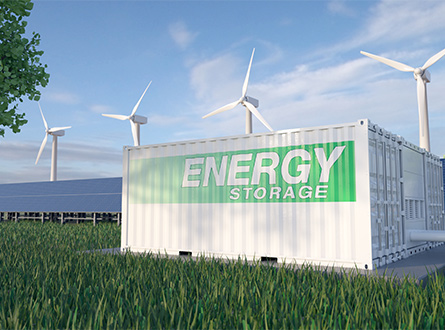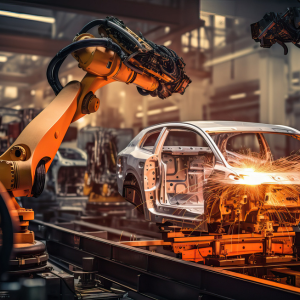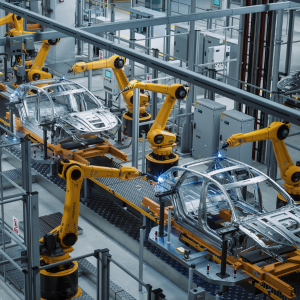13 Energy Saving Tips for Manufacturers
Post By: Luke West On: 20-06-2022 - Manufacturing
Conservation of energy is a major talking point in any arena, when so much work needs to be done to replace fossil fuels with renewable resources. With UK industries accounting for nearly a fifth of all the country's energy consumption, the responsibility is on them to try and reduce this figure. In doing so, only minor changes are needed to achieve energy saving improvements.
Estimates suggest that business expenditure on energy in the UK ranges from around £2,000 to £12,000 a year. It's an unavoidable running cost in business, but there are definitely some things you can do to reduce it. Apart from the longer term and larger scale solution of seeking out alternative energy sources, you can start cutting down your bills straight away by initiating some basic energy saving practices.

Below, you'll find 13 simple energy saving tips for industry and business owners.
1. Collaboration
Any initiatives you introduce to save energy should be a collaborative effort that involves all employees. You'll be less likely to achieve results if you just issue orders, rather than helping your employees to understand the underlying reasons for change. You should communicate with them about the energy crisis, and discuss it regularly in meetings. Most people now are aware of the global problem, but not so many recognise the real business costs of energy consumption. It's helpful if they understand how energy use affects your bottom line, and what the knock-on effect is to the company's overall success. If people understand the big picture, they'll want to do their best to help.
2. Optimise Appliances
Depending on what appliances you might have in the workplace, you can increase energy savings by optimising their settings. Start small, and perhaps turn the dial on the staff fridge by one or two notches so it's a fraction less cold. This will save energy for your business without having an extreme or contentious impact on your employees.
3. Turn It Off
Another simple fix is to make sure all machinery and equipment is turned off when not in use. In the beginning, this might mean taking a walk through your premises after hours to make sure all the equipment is powered down. Running equipment only when you need to can result over time in significant cost savings.
4. Lights Out
Switching off lights is still one of the most straightforward ways to save energy, but it’s surprising how often people don't think about it, even if no one is in the room. The problem gets bigger if employees are going back and forth between different work areas and buildings as they carry out their duties. You should try and instil into everyone's thought processes the basic principle of switching out the light whenever they leave a room empty – and perhaps reinforce it with signs.
You might install motion sensors that turn lights on only when an area is occupied, or day/night switches that will control outdoor lighting automatically. You could even invest in smart lighting systems that can adjust the light values based on room occupancy, or the availability of natural light.

5. Replace Existing Lights With LED
The UK announced a ban on halogen light bulbs with effect from September 2021, and fluorescent bulbs are to be phased out by 2023. LED bulbs use roughly 25% of the energy required to produce the same amount of light as halogens, and will last at least five times longer. They’re a logical choice for energy-saving measures.
6. Exploit Natural Airflow
Opening a window follows the same principles as switching off the light: it's a simple thing to do that will have a cumulative effect on your energy bills. Continuous air conditioning is not only expensive, but bad for your health. It can cause respiratory problems for people constantly exposed to air that's too cold, and people with pre-existing respiratory conditions such as asthma will find these get worse. You should try and exploit whatever natural airflow there is at your premises, by opening windows and/or doors, so that the indoor climate is controlled to a greater degree by the outdoor air temperature.
7. Strategic Shading
You might suffer from heat coming into a building in the summer via unprotected windows. Directing the sun’s radiant energy to a fixed focal point can generate a great deal of localised heat, and if you're sitting or working in that hotspot you might need some protection. Rather than switching on AC or a fan, you can save energy by using more simple measures
Fixed or adjustable shading is fairly straightforward using blinds or shutters. If the sun is very strong on the windows, you might think about installing sun filter window films, which will screen out most of the heat while still letting in the light. A more ecological solution for walls and doorways would be to plant trees and shrubs, which will screen out some of the direct heat, but also reduce the amount of available light.
8. Air Conditioning And Heating
You should try to discourage your staff from using fan heaters or portable radiators. Though convenient for individual use, these forms of instant heat require lots of power to run, and that will show up on your electricity bill. If you're using an air conditioning system for both heating and cooling, this could use up some 20-40% of the total energy required to run a building, and again be costly.
However, you can optimise the settings to a point where the system costs less to run and the ambient temperature is more comfortable. This has been shown in various tests to be 24-26ºC. Many large establishments such as airports, hotels and offices seem to operate their AC on the basis that setting it at a lower temperature will give a better cooling performance. But the cooling action of the system's compressor is the same as it would be at other settings, so there's no significant improvement in AC performance.
On the other hand, running the system at the common setting of 18-21ºC makes it very cool indoors, and many people end up having to put on warmer clothing to counteract the chill. This obviously leads to a great waste of energy. Recent studies have shown that the human body is quite comfortable operating at temperatures of 24-26ºC, provided there is sufficient air movement and humidity control. Running your AC system at this temperature will result in a reduction of around 18% in its energy consumption, according to research by Australian scientists.
9. Check Air Conditioning Lines
To ensure that your HVAC is running at maximum efficiency, it's crucial to ensure that it's properly insulated. There should be intact pipe lagging on all the unit's refrigerant lines, especially if it's situated outdoors. If the air conditioner's refrigerant lines aren't properly insulated, you'll find that the heat from the environment is just being absorbed, and the unit is cooling the air outside instead of inside the building. In winter, the opposite will happen and all your heat will go to waste.
10. Insulation
In both heating and cooling situations, insulation is a great energy saver. It provides a barrier against temperature changes, keeping heat in or out as the case may be. Installing proper insulation in the roof, walls and sometimes even the floor of your workspace makes it much easier for you to retain winter warmth and summer coolness.

11. Reduce Delay On Closing Doors
Automatic doors use sensors to close doors into hazardous or temperature-controlled environments. These are set up with a pre-determined time delay, so that refrigerated storage rooms, for example, don't lose too much cold air while the door is open. Where practical, you should try and limit the frequency with which such cool rooms are accessed to save on energy. You can also make simple energy savings by adjusting the sensors to reduce the delay time for closing automatic doors.
12. Scheduled Maintenance
You can help to optimise the performance of your electrical and mechanical equipment with regular cleaning and scheduled maintenance. This will go a long way towards achieving better performance and longer equipment lifespan, which will also lead to energy savings.
13. Check For Leaks In Compressed Air Systems
Compressed air systems account for about 10% of all electrical consumption in UK industry, so any reduction in this figure would be a great gain. You can make some energy savings by reducing the operating pressure of any compressors you might be using to the minimum permitted level for the system to operate efficiently. You must also check regularly for leaks in the system, and turn the compressor off completely when you don't need it.
Starting Small And Monitoring Changes
Small changes can make a big difference to your energy efficiency. Once you’ve started with basic cost savings, you might want to consider longer-term energy efficiency measures. You can monitor your energy usage to see which systems use the most energy, and perhaps consider power factor correction.
Get More From Rowse Straight To Your Inbox




